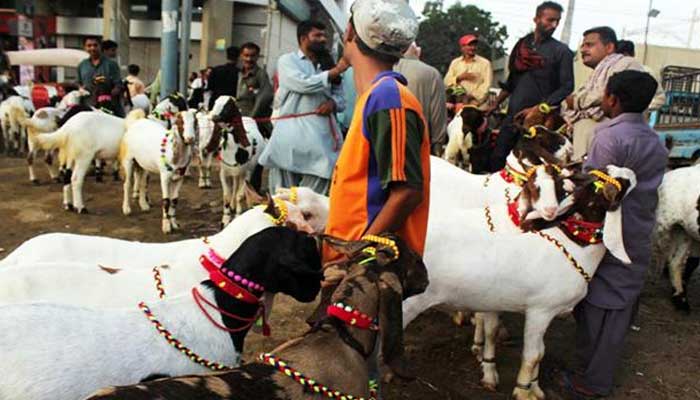Eid-ul-Azha 2020: NIH issues advisory for prevention of COVID-19, CCHF
Sacrificial animals risk spreading Crimean-Congo Hemorrhagic Fever due to increased human-animal interaction, says NIH
July 02, 2020

ISLAMABAD: The National Institute of Health (NIH) in its advisory has warned that the movement of sacrificial animals ahead of Eid-ul-Azha could amplify the risk of coronavirus spreading as crowds are expected to gather in markets to buy animals, reported The News.
The NIH added these animals also risk spreading the Crimean-Congo Hemorrhagic Fever (CCHF) due to increased human-animal interaction, commonly found in these animals.
Recognising the threats, the Field Epidemiology and Disease Surveillance Division (FEDSD) of NIH has issued an advisory, alerting various stakeholders including human and animal healthcare providers to take timely steps for the prevention and control of CCHF and COVID-19.
The advisory lists several instructions that need to be adopted for the prevention and control of CCHF since there is currently no vaccine available for the disease.
The instructions include use of full sleeves and light coloured clothes, gloves, face masks, and hand sanitizers, practising of social distancing during a visit to cattle markets; frequent hand-washing and hand sanitization to disinfect and clean hands; avoidance of all crowded places including large family gatherings during Eid and sacrifice of animals; and thorough washing of hands with soap after coming in contact with animals or their blood.
Moreover, NIH has also issued its 48th Seasonal Awareness and Alert Letter (SAAL) for epidemic-prone infectious diseases. The letter exhibits patterns of high-priority communicable diseases including Cholera, Coronavirus diseases (COVID-19), CCHF, Dengue, Leishmaniasis, Malaria, Measles, Polio and Typhoid XDR.
These diseases are predicted to be on high alert during the said season. It also contains a detailed introduction of diseases, case definitions, infectious agents, modes of transmission, case management and prevention.
The main purpose of SAAL is to alert all concerned health authorities and professionals at all levels and to facilitate them for timely and efficient response to outbreaks/epidemics. This letter is developed for summer/monsoon from June to September.
NIH has advised the federal, provincial and district health departments as well as other stakeholders to keep a continuous watch on the anticipated seasonal public health threats and to take all preventive or curative measures in this context.
Originally published in The News











